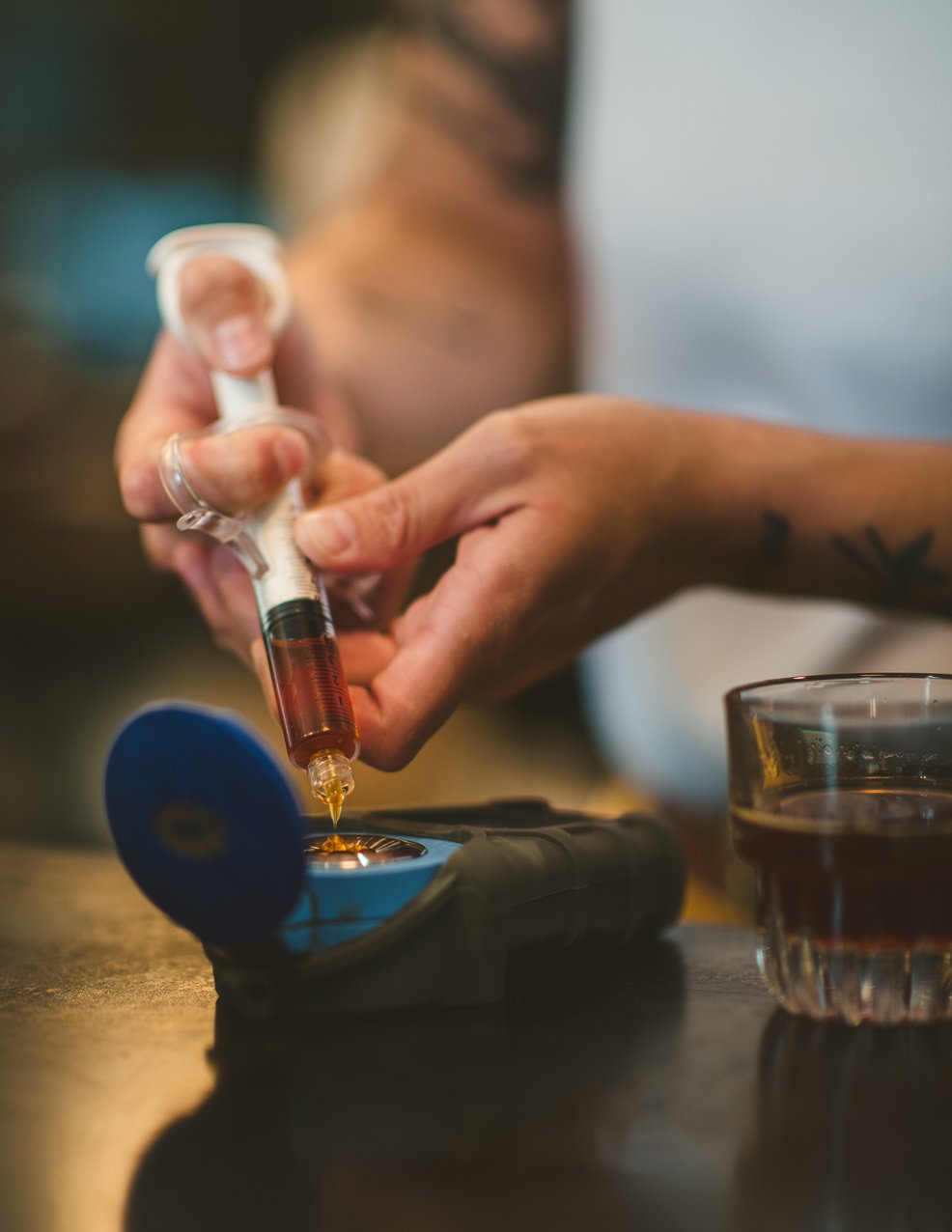Coffee Brewing Basics
Examining the Basics of Coffee Brewing
Understanding the fundamentals of extraction will make you a better brewer. Of all the gadgets our shops incorporate, one of the tiniest and most unassuming is among the most valuable tools a barista can have: the refractometer.
By measuring the amount of light refracted through the brew, we can determine the amount of coffee solubles suspended in the water. This is known as the Total Dissolved Solids (TDS) .
Refer to the accompanying chart below. You’ll note that as the brewing ratio changes, the slope of the blue lines changes. To use the chart, determine your TDS, plot it along the appropriate ratio line in blue, and follow it down to the X-axis to determine your Extraction Percentage, which, simply put, is the amount of the coffee you managed to absorb into the water. So for instance, a TDS of 1.4% at a 1:15 ratio would be an extraction of around 18.8%, but the same TDS at a 1:17 ratio would be 21.8%.
This may seem intimidating, but in almost all cases, a person with little to no experience tasting coffee can taste the difference between these two cups if they compare them side by side! For most people, it’s shocking to learn that a seemingly insignificant difference of .1% TDS or 1% extraction is not only taste-able, but significantly so.
For this reason, we have individual “dial-in” recipes for each coffee we serve at Southdown. Many things from a coffee’s natural density, its processing, or its roast degree can impact a coffee’s solubility, so it’s important that we present them all at their best.
While we have this chart for a visual aid, consider these basic rules for dialing in: grind coarser to decrease TDS; grind finer to increase TDS. Remember, these are basic rules, and exceptions will apply. For instance, lowering your water temp would also decrease TDS, but that will also impact other aspects of extraction and in general is not an option we use in the cafe. Another thing worth noting is that the depth of the bed of coffee, as well as the width and shape of the basket, will have a huge impact on the overall extraction. The main difference here is “contact time” between the water and the coffee.
For example, if you are dialing in a 1-gallon brew on our Fetco Brewer you will need a coarser grind than if you brew the same coffee as a single serving V60. This is mainly due to the increased contact time in the much larger Fetco Brewers, as well as a slightly longer overall brew time.
Southdown’s preferred brew ratios for Drip and Pour-Over are between 1:16-17, and we typically look to reach at least 21% extraction in everything we serve. This may be different from what other coffee roasters recommend, but compared to smaller ratios like 15:1, a higher ratio results in a slightly larger dose of water, therefore brew time is increased.
At a finer grind you can achieve high extractions that taste wonderful, highlighting as much of the coffee’s true flavor as we can, rather than simply creating a “strong” but under-extracted beverage.



